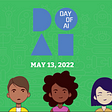A(lways) I(nteresting)
What do a very realistic fake President Obama, a self driving car, and artificial limbs have in common? All of them are much better thanks to Artificial Intelligence. And those things just scratch the surface of the possibilities that this field holds. AI is already used in multitudes of different fields, present in everything from video game development to drug creation to advertising, and will indubitably expand into many more in the not-so-distant future. With the era of AI looming on the horizon, it is imperative that any given person knows, at the very least, the basics of how it works. Thanks to this course, I can say that I do.
One of my favorite topics in AI is reinforcement learning algorithms. In my humble opinion, they are the most powerful and versatile type of machine learning algorithms. I first discovered them when surfing YouTube and finding a video titled “Using A.I. to DOMINATE NERDS in TETRIS”, in which a man called “CodeBullet” creates a Tetris player more skilled than the vast majority of the population with nothing but a Python code editor and the principles of reinforcement learning. Since then, I have come to learn that reinforcement learning is also used in more “impactful” jobs, such as creating new pharmaceuticals or driving self-driving cars. To my delight, we got to learn a bit about this type of machine learning algorithm in the class.
In this class, we learned that reinforcement learning works much in the same way that dog training does: the agent (the machine learning model that is being trained) is given a reward for doing things right and a punishment for doing things wrong. Much like dogs, reinforcement learning agents like maximizing rewards and minimizing punishments, so they learn behaviors that get them rewarded and avoid getting them punished, learning to do what the trainer wants in the process. I also learned that the behaviors that the agents do are not coded in by the creator of the model; rather, they are learned organically, in a process similar to evolution. However, reinforcement learning was only a small part of what we were taught in this class.
One of the things that I liked about the class was the amount of material it covered. Not only did our class manage to get through the driving principles of seven different types of machine learning algorithms, we also got to see how all of these algorithms are deployed in practice. We even got to create our very own neural network (one of the algorithms we went over)! Granted it was very small and simple, but it was an AI program that I made, not one that was made for me. In addition to learning the code of machine learning algorithms, we also did some hands-on exercises to improve our skills with the Python programming languages. We did projects such as making a game of rock paper scissors and finding the square of a number. These projects, despite being simple, greatly improved my abilities with Python and made me consider exploring the language further.
Thanks to this class, I now know the principles behind several common types of machine learning algorithms, have a basic understanding of Python, and am excited for what the future of AI brings. For better or for worse, I believe that no matter what happens, AI is here to stay.






